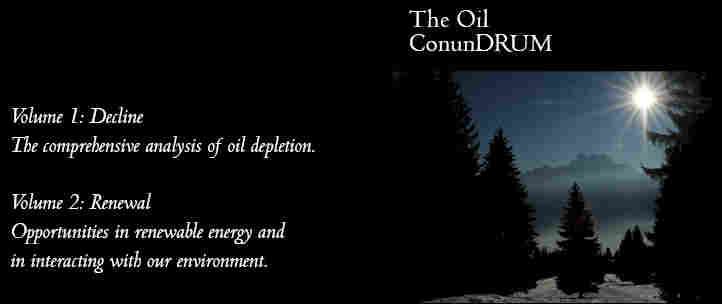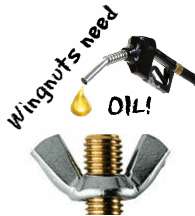Windfarm Development
George Monbiot describes how the development of windfarms forces environmentalists and traditional industrialists to inhabit each others shoes for once. They each find the fit rather uncomfortable:
But these are not the only ways in which environmentalists’ support for windfarms makes me squirm. The joint statement about the Whinash project published by Greenpeace and Friends of the Earth complains that “opponents of the scheme, which would be sited beside the M6 motorway, have claimed that the wind turbines will spoil the views, failing to acknowledge that the presence of a motorway has degraded the landscape”.(11) It quotes Friends of the Earth’s energy campaigner Jill Perry, who says, “I’m amazed that people are claiming that the area should be designated a National Park. What kind of National Park has a motorway running through it?” Well the New Forest and South Downs national parks, for a start.(12) Their creation was supported by Friends of the Earth.I have visited the Lake District National Park, the proposed region in northern England for the windfarm development that Monbiot talks about. From my trip, I did learn that national parks in England have little in common with the national parks found in the United States. For one, I recall seeing many residences, pubs, and conventional public roads within the boundaries of Lake District N.P. In contrast, national parks in the U.S. maintain a much more primitive character. Well, duh, the U.S. government owns the national park -- this from a rather neutral German observer :
Elsewhere, these groups oppose the “infill” around new roads. Elsewhere, they argue that landscapes and ecosystems should be viewed holistically: that they do not stop, in other words, at an arbitrary line on the map, like the boundary of a national park. I understand that green campaigners are placed in an uncomfortable position when arguing for development rather than against it. But I do not understand why they have to sound like WalMart as soon as the boot is on the other foot.
I believe the Whinash windfarm should be built. But I also believe that those who defend it should be a good deal more sensitive towards the concerns of local objectors. Why? Because in any other circumstances they would find themselves fighting on the same side.
Furthermore, the land in a national park is not owned by the nation – unlike most of the land in American national parks. (McAveeney, 9) In British national parks most of the land is privately owned and privately controlled, so the designation as a national park does not alter the ownership of land within the area.You can see why American environmentlists see windfarms as a sell-out to their cause.


 Not clear how that will happen, although he did mention nuclear, hydrogen, and ethanol as options. For the latter, maybe some bio-tech thrown in for good measure to achieve better than pathetic yields?
Not clear how that will happen, although he did mention nuclear, hydrogen, and ethanol as options. For the latter, maybe some bio-tech thrown in for good measure to achieve better than pathetic yields?

 Then this from a Bush interview on CNBC:
Then this from a Bush interview on CNBC:
 Well, no worry. As I write this,
Well, no worry. As I write this,  I spent much time in my youth shimmying up poles collecting these emerald-colored glass jewels, but heck if you can find them anymore. Once they started becoming more rare, insulators became more valuable, which caused more people to track them down, a rather abbreviated ad infinitum.
I spent much time in my youth shimmying up poles collecting these emerald-colored glass jewels, but heck if you can find them anymore. Once they started becoming more rare, insulators became more valuable, which caused more people to track them down, a rather abbreviated ad infinitum.  (If you didn't get a chance to see it, visualize GyroMan from Road Warrior. If you didn't see that either, look in the back pages of 20-year-old Popular Science magazines for the gimmick) I found it strange that CBS reporter Bob Simon basically went gaga over the technology without asking the obvious questions on gas mileage, range, etc. And true to form, the local right-wing radio meatstick also went hyper over the units this morning, sounding almost willing to fork over the funds right then and there. But in actuality, Mr. Meatstick had really no intention of purchasing an AirScooter, as he launched into an attack on all conventional forms of mass transit, claiming them all 19th antiques or some such nonsense.
(If you didn't get a chance to see it, visualize GyroMan from Road Warrior. If you didn't see that either, look in the back pages of 20-year-old Popular Science magazines for the gimmick) I found it strange that CBS reporter Bob Simon basically went gaga over the technology without asking the obvious questions on gas mileage, range, etc. And true to form, the local right-wing radio meatstick also went hyper over the units this morning, sounding almost willing to fork over the funds right then and there. But in actuality, Mr. Meatstick had really no intention of purchasing an AirScooter, as he launched into an attack on all conventional forms of mass transit, claiming them all 19th antiques or some such nonsense..jpg) Another contender,
Another contender,  JEFFREY BROWN: When the museum opens in 2007, visitors will walk through a world in which dinosaurs and men lived side by side, one dinosaur even has a saddle.
JEFFREY BROWN: When the museum opens in 2007, visitors will walk through a world in which dinosaurs and men lived side by side, one dinosaur even has a saddle.







